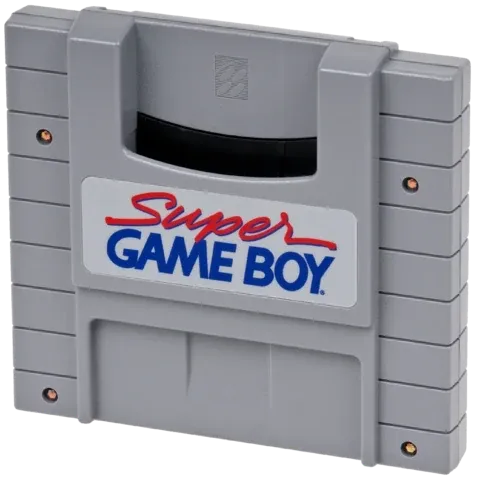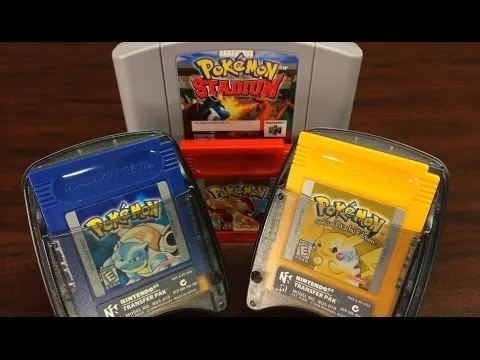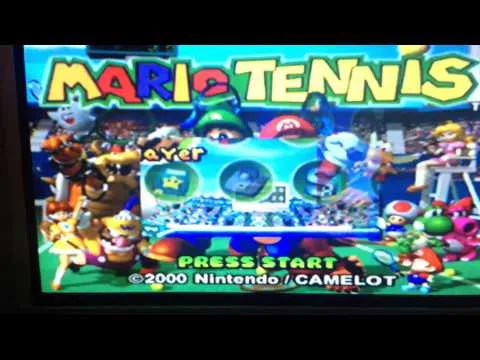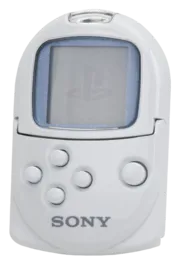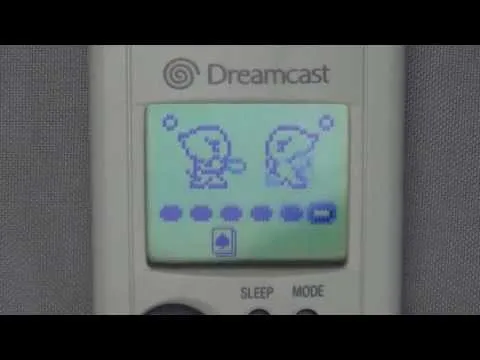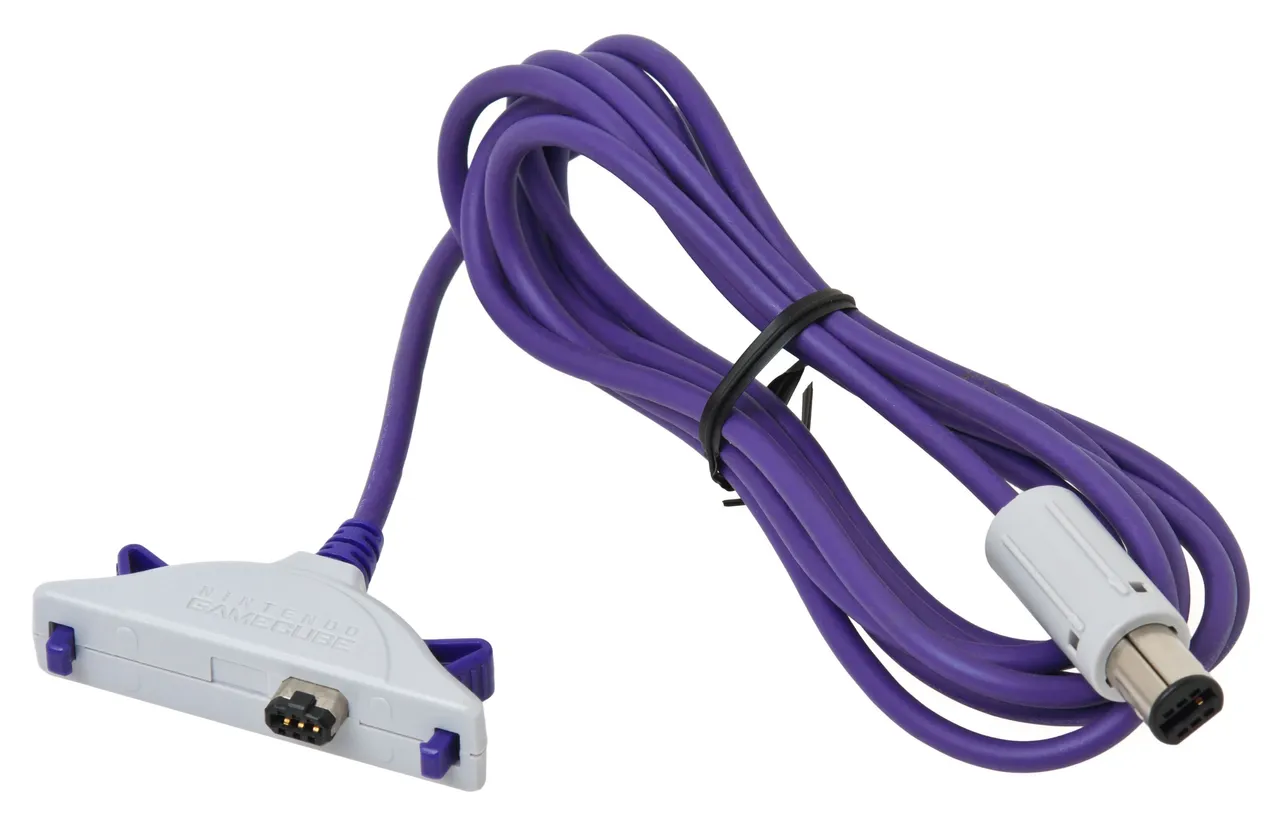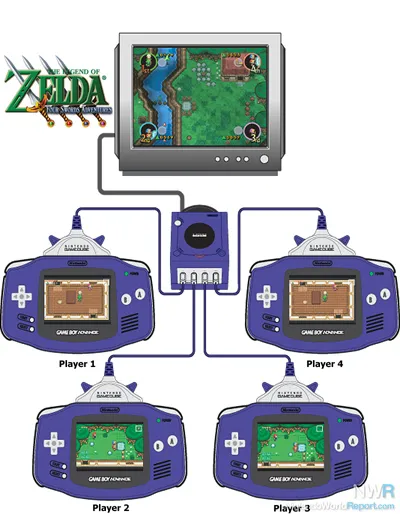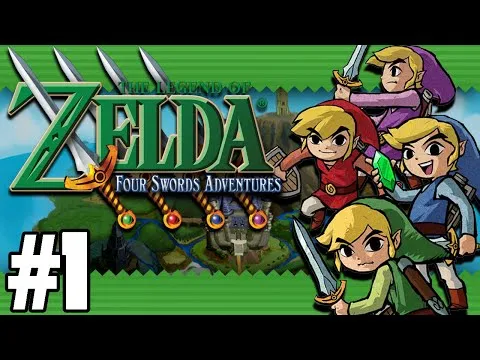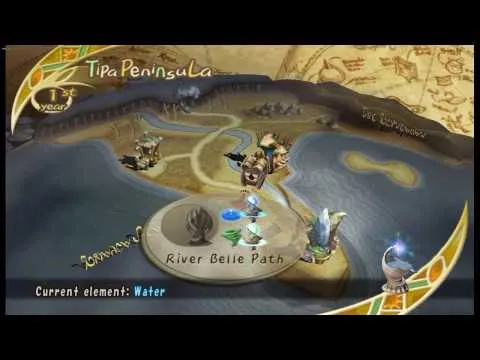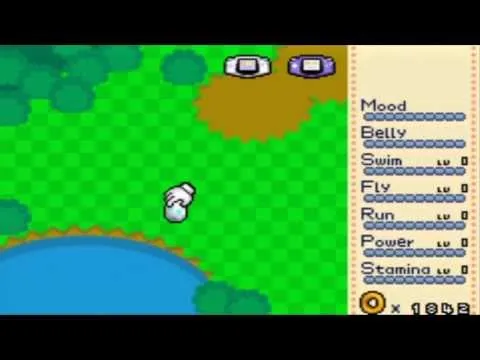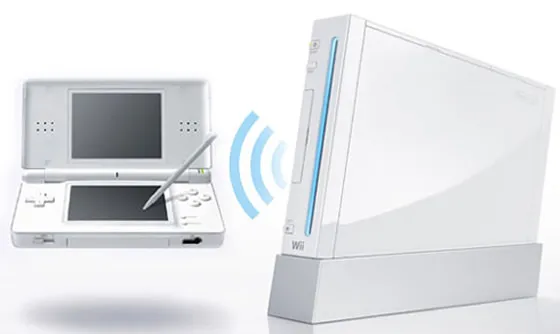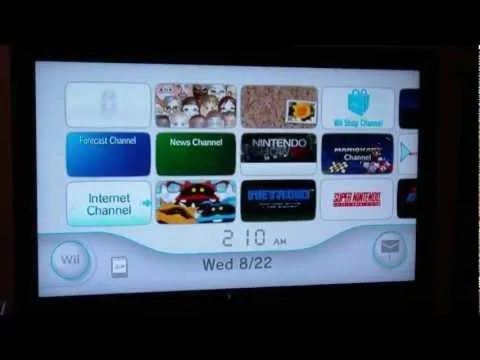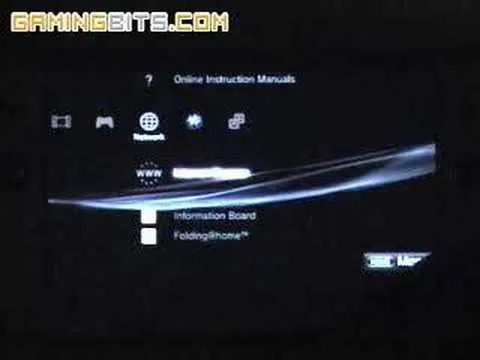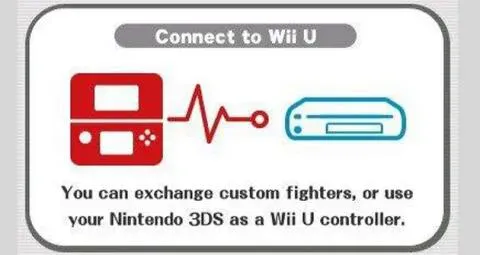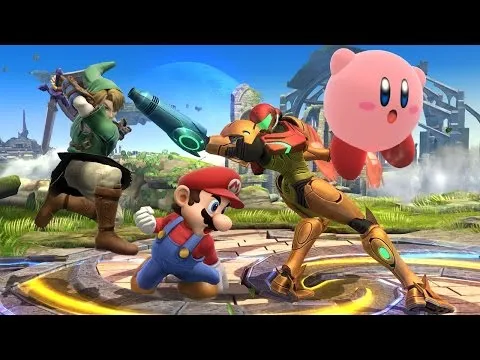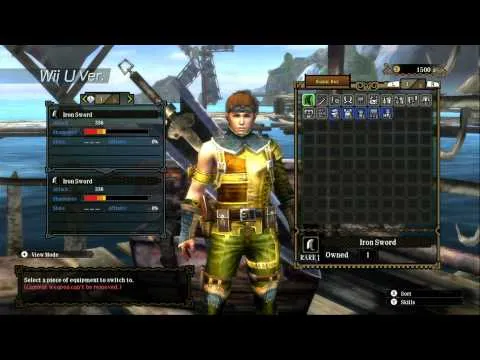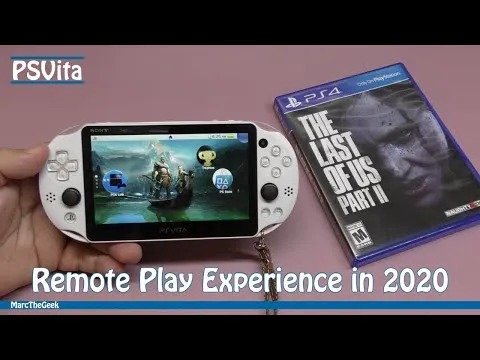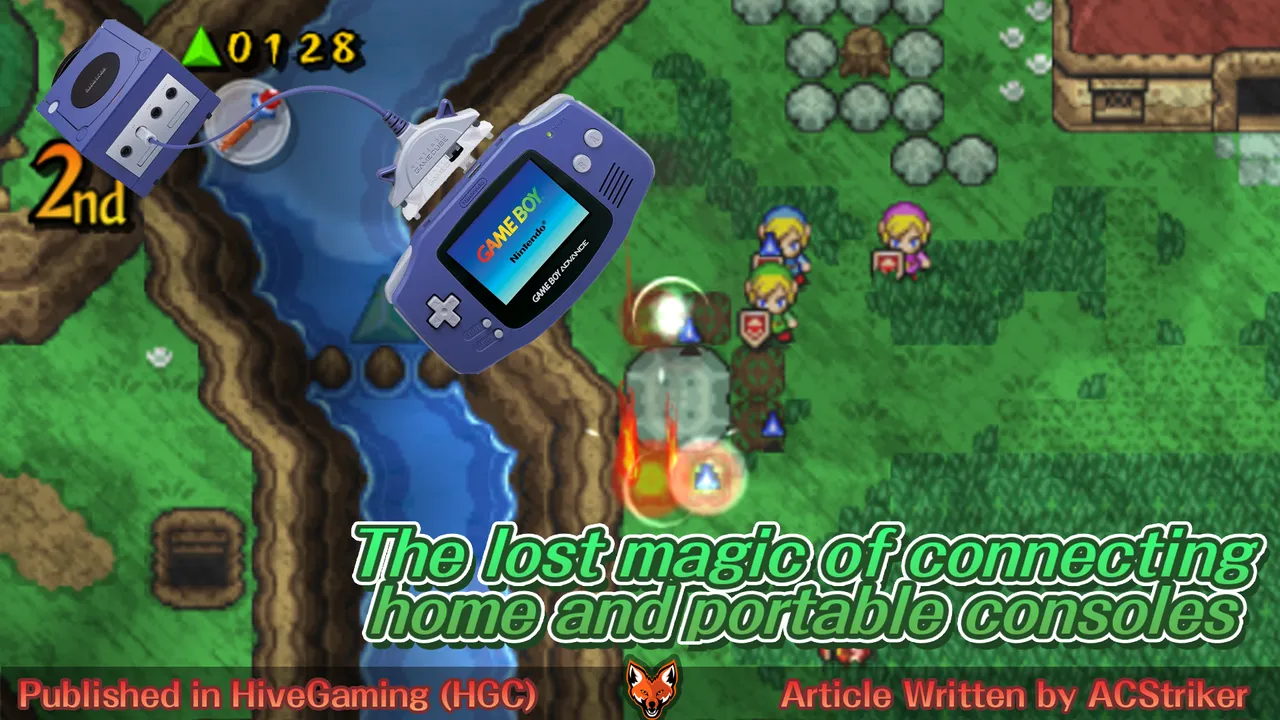
This post is avaliable in both English and Spanish (translated with DeepL).
Este post está disponible en Inglés y Español (traducido con DeepL).
English
Hello everybody! As yesterday I tried Pac-Man Vs. for the first time, I thought in a particularly interesting topic that was around three generations ago: Long before Nintendo superseded both home and portable consoles with the hybrid Nintendo Switch and Sony ditched the Vita after it barely existed, home consoles and portable consoles had quite different goals and games...but their creators always found creative ways to have owners of both connect them for special features. Now, mind you that most cases actually were limited to some few specific games that supported this, so it wasn't a widespread feature at all; which makes the games that use it quite unique cases.
At first I thought I would only write about the famous Gamecube-GBA games, but then I realized how there were more cases like this not only in the generation after, but also on the one before that. So for the sake of keeping a chronological order of events, I will actually order it like such (from oldest to newest), though expect me to have something big for that GC-GBA section :)
The first precursor (technically): Super Game Boy
While this is really not on the same level as what are the rest, it is fascinating by itself in how Nintendo made a Super Nintendo cartridge with a Game Boy inside. Yes, it is actually like that (instead of emulation, since at that time it wasn't a viable technique) and it allowed you to play any Game Boy games on your SNES and TV. It did offer extra features like using borders and making your own, and some games had special support for the SGB (like Donkey Kong 94') with special borders and color palettes.
There also was a Super Game Boy 2 which allowed for Game Boy Color games to be played as well, but it was only released in Japan. With this oddity covered, its finally time to talk about some real console-to-console connectivity!
Nintendo 64 and Game Boy: Transfer Pak (ft. Pokemon Stadium)
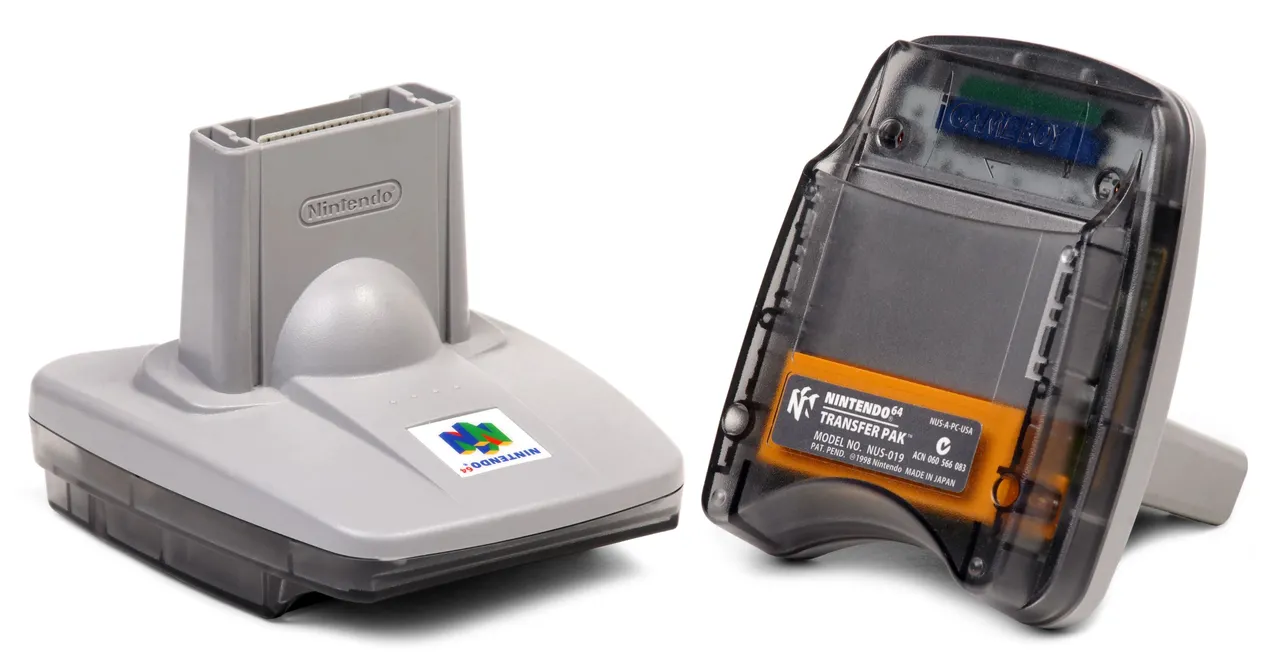
Alright so...turns out that this one case is not directly connecting an N64 and a Game Boy, but it is definitely the first case where you could use your portable games to influence something in your console games. The Transfer Pak is a peripheral that would go into the N64's controller back slot (where a Memory Pak or Rumble Pak would go) and has a slot to insert Game Boy/Game Boy Color games.
The Transfer Pak's biggest use was in Pokémon Stadium 1 and 2, to the point that said game had a Transfer Pack included in each copy. As Pokémon Stadium had the appeal of having battles in 3D (with the main titles being in Game Boy) and extra modes, it makes total sense the feature of using your own Pokémon from a GB cartridge into the game. While the Stadium games provided a Rental option to make your own team from picking Pokémon, it gives a lot of purpose to having your own team from a GB game and using it in the several modes avaliable. They also had a special mode where you could run your GB Pokémon game on the screen just like the SGB allowed, which is neat but also exclusively limited to running Pokémon games.
There are also the Mario Golf and Mario Tennis games, which had versions on both N64 and Game Boy. The N64 games had a focus on the Mario cast and playing through several modes and tournaments, while the Game Boy games actually were closer to RPGs where you played with original human characters through a story. A neat feature is how connecting both games with the Transfer Pak allowed using your RPG characters on the console games, as well as unlocking extra courts and features in both versions.
The very few other cases of Transfer Pak's usage are quite limited to unlocking things in one version or another, like in Mickey Speedway USA where connecting a certain GB game unlocked three characters (something that was curiously replaced in the Japanese version with normal unlock methods), unlocking cheats with Perfect Dark GB for the N64 version, and importing photos taken with the Game Boy Camera to Mario Artist games on the 64DD (which were exclusive to Japan along with the 64DD itself).
One odd case is how Perfect Dark on N64 originally was going to have a feature to use photos on a character's face through the Game Boy version AND the Game Boy Camera peripheral, but it got scrapped due to complications.
Sony Playstation and Sega Dreamcast: PocketStation & VMU
While from different generations and companies, I paired them both here due to how they don't involve portable consoles, but more like small portable peripherals intended to be used along with the consoles (The VMU being a Dreamcast controller's memory card, except with a screen and buttons when not attached).
The PocketStation was released only in Japan, and many titles localized or not had support for the PocketStation exclusively in the Japanese versions (except on two titles). It was marketed and worked as a mini console with games and everything, but it also could act as a memory card if inserted on the PS1's Memory Card slot.
Meanwhile, since the Dreamcast's VMU was part of the console itself but with included interactivity, it is a known quirk of the Dreamcast itself and didn't see any cuts in most if not all games. When plugged to the controller, it acted as a sort of extension to the gamepad itself, showing something of the game being played (from a small icon to actual information). Some games had VMU minigames avaliable to transfer to it, which could be played with the VMU deattached.
While it wasn't the only special use it had, one of the most known ways it was used was in the Sonic Adventure games and the Chao Garden: You could take out your Chao (in a nutshell, sort of virtual pets to take care of) from the Garden to the VMU for a "Chao Adventure", where you could occasionally find minigames but mostly leave it running on the background while playing and your Chao would improve stats by itself.
Nintendo Gamecube and Game Boy Advance: Gamecube-GBA Link Cable
And here's the big one. With both of these consoles still being beloved from their quirky features but solid hardware and surprisingly robust catalog, a powerful combination succeeding the Super Game Boy and Transfer Pak was conceived: Connecting your GBA to the console itself.
With this cable and the right games, the Gamecube could connect with the Game Boy with or without a cartridge inserted (depending of the game), and while some were to be expected or not too noteworthy, the most known cases are where this is used to its biggest potential.
Zelda Four Swords Adventures is easily the most unique game both from the usage it gives to this and in the Zelda series itself: Allowing up to 4 players to play cooperatively by connecting GBAs for each player, everybody gets their health bar on their GBA screen, and they get their own view in it if they enter a house, cave or dungeon.
Another specially crafted game for this feature is Final Fantasy Crystal Chronicles (which was remastered not too long ago with the use of online multplayer) where GBA screens were similarly used individually for visiting shops, inventory, and even selecting commands in battles simultaneously.
The last unique mention is Pac-Man Vs (also remastered on Namco Museum for Switch), which has the quite simple premise of up to 3 players as ghosts chasing another player as Pac-Man in order to become Pac-Man and get enough points to win the game. The Pac-Man player would play on the GBA with a full view of the board, while the rest would only have a limited view on the TV in 3D.
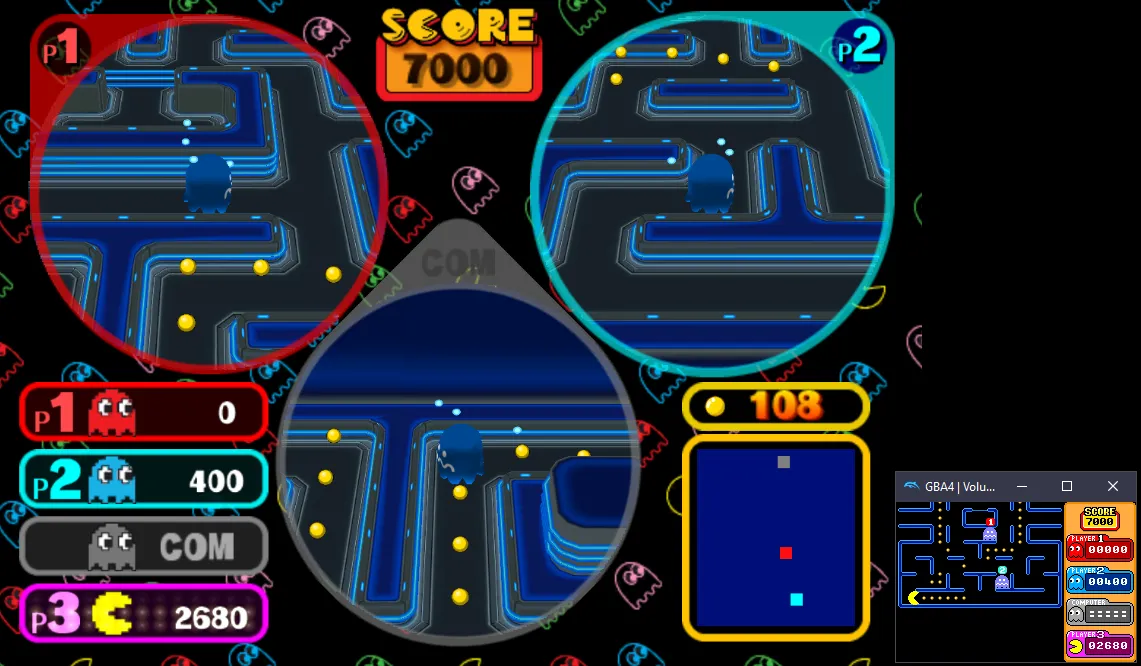
Screenshot captured by myself.
The other noteworthy mention left would be the Pokémon games: Pokémon Colosseum and XD have modes similar to Stadium avaliable where you can use your own GBA team, and the Pokémon Box games allow you to both store Pokémon in the GC and play the GBA titles on the TV as well. There are some few other cases like Metroid Prime that allowed you to unlock the Fusion Suit from Metroid Fusion if you linked both games.
Oh, and both Sonic Adventure ports for Gamecube also have a replacement to the Chao Adventure VMU feature through this kind of connectivity: They can transfer a "Tiny Chao Garden" into your GBA without any cart inserted, where you can interact with the Chao and play minigames to get rings. This is also avaliable in most of the Sonic games for GBA (avaliable from start in some, unlockable in others), and SADX/SA2B can transfer Chao from those as well.
One final mention is the Game Boy Player addon for the Gamecube, which served the same purpose as the Super Game Boy, except for GBA games. Curiously enough, it even kept the port for connecting a link cable and playing with other GBAs in multiplayer.
Nintendo DS and Nintendo Wii: Who needs wires anymore?
With the NDS/Wii generation being a defining step for local multiplayer and online connection being done wirelessly, it makes sense that now peripherals aren't needed anymore to connect between consoles. While once again Pokémon games would be a mayor mention (Pokémon Battle Revolution and My Pokémon Ranch), there aren't actually many games to mention that used this feature.
However, one way I vividly remember this feature being used was in the Nintendo Channel, which had a DS Download Service category where you could send DS demos from the Wii to your Nintendo DS through Download Play.
Another fascinating use is that it allowed to transfer Miis between consoles. Now, the Nintendo DS did not have any Mii support integrated, but there was exactly a single game that COULD receive Miis, and the Wii had a secret button combo to enable that option. This would eventually be taken advantage of by the 3DS being compatible with this feature, and which much more of an use as the 3DS does include its own Mii channel.
Playstation Portable and PS2/PS3: From simple to obscure
This is so far the one I couldn't find much information about: Some few PS2 games like Crash Tag Team Racing, Micro Machines V4, ATV Offroad Fury 4 and Outrun 2006 Coast to Coast are confirmed to have support for recognizing a PSP version of those games connected through USB (mostly for extra unlocks or save transferring).
And aobut the PSP-PS3 compatiblity, there isn't actually much to say other that it doesn't really involve linking in any way PS3 and PSP games. Instead, connecting these consoles enabled the Remote Play feature where you have any PS1 games you had into the PS3 to be streamed and playable into the PSP, with some very few actual PS3 games supporting this feature.
Later on the PS3 received an update that added Playstation Vita support for Remote Play as well, though it only expanded by a few games the PS3-exclusive compatiblity.
Nintendo 3DS and Wii U: At least one game made good use of it!
Back when I had this idea, I thought that the 3DS/Wii U connectivity would be a disappointing finale considering how I only knew of Smash Bros's connectivity between both games allowing to transfer Mii Fighters and using the 3DS itself as a controller. While the controller feature is quite unique by itself, I really thought that Smash was the only game that ever used this...
...Until I found out that Monster Hunter 3 Ultimate also had support for 3DS/WiiU connectivity, and it is actually quite fleshed out! Not only it supports the usual save data transferring that could be seen in previous cases, but the games are also actually capable of doing crossplay between both consoles!
Playstation 4 and Playstation Vita (and more): What Remote Play should have been on the beginning
The last case I know so far of connecting portables and home consoles, but also one that delivered what seemed like a promising idea back with the PS3-PSP/PSV Remote Play. Unlike that, the PS4 Remote Play feature works with virtually any PS4 game that doesn't need peripherals like the Playstation Move, meaning that the promise of playing any PS4 game on your Vita with the feature is true!
And what's more, it seems that some few years later the support would extend to other platforms: The Playstation TV (which is mostly a Vita anyways), Android phones, and even Windows! This new Remote Play feature would also become part of the Playstation Now feature, which streams games from anywhere into whatever you're using.
Conclusion
While the idea itself is quite undermined with how underused it ended up in almost all of the cases it was implemented (which is understandable considering it required either programming support for a different console or that there was a game version avaliable for both consoles), the few shining spots seen had a lot of creativity with screen-enlarging experiences, data transferring features, new portability, and at best, fascinatingly unique games or that took advantage of portable games as a key feature.
Español
¡Hola a todos! Como ayer probé Pac-Man Vs. por primera vez, pensé en un tema especialmente interesante que rondaba hace tres generaciones: Mucho antes de que Nintendo desbancara a las consolas domésticas y portátiles con la híbrida Nintendo Switch y de que Sony se deshiciera de la Vita cuando apenas existía, las consolas domésticas y las portátiles tenían objetivos y juegos bastante diferentes... pero sus creadores siempre encontraban formas creativas de que los propietarios de ambas las conectaran para obtener características especiales. Ahora bien, tened en cuenta que la mayoría de los casos se limitaban a unos pocos juegos específicos que lo soportaban, así que no era una característica generalizada en absoluto; lo que hace que los juegos que lo utilizan sean casos bastante únicos.
Al principio pensé que sólo escribiría sobre los famosos juegos de Gamecube-GBA, pero luego me di cuenta de que había más casos como éste no sólo en la generación posterior, sino también en la anterior. Así que en aras de mantener un orden cronológico de los acontecimientos, en realidad lo ordenaré así (de más antiguo a más reciente), aunque esperad que tenga algo grande para esa sección de GC-GBA :)
El primer precursor (técnicamente): Super Game Boy
Aunque realmente no está al mismo nivel de lo que son el resto, es fascinante por sí mismo cómo Nintendo hizo un cartucho de Super Nintendo con una Game Boy dentro. Sí, realmente es así (en lugar de emulación, ya que en aquella época no era una técnica viable) y te permitía jugar a cualquier juego de Game Boy en tu SNES y en tu televisor. Ofrecía características extra como el uso de bordes y la creación de los propios, y algunos juegos tenían soporte especial para la SGB (como Donkey Kong 94') con bordes y paletas de colores especiales.
También hubo una Super Game Boy 2 que permitía jugar a juegos de Game Boy Color, pero sólo se lanzó en Japón. Una vez cubierta esta rareza, por fin es hora de hablar de la verdadera conectividad entre consolas.
Nintendo 64 y Game Boy: Paquete de transferencia (con Pokemon Stadium)

Muy bien, pues... resulta que este caso no conecta directamente una N64 y una Game Boy, pero es sin duda el primer caso en el que podías usar tus juegos portátiles para influir en algo en tus juegos de consola. El Transfer Pak es un periférico que se introduce en la ranura trasera del mando de la N64 (donde iría un Memory Pak o Rumble Pak) y tiene una ranura para insertar juegos de Game Boy/Game Boy Color.
El mayor uso del cartucho de transferencia fue en Pokémon Stadium 1 y 2, hasta el punto de que dicho juego tenía un cartucho de transferencia incluido en cada copia. Como Pokémon Stadium tenía el atractivo de tener combates en 3D (siendo los títulos principales en Game Boy) y modos extra, tiene todo el sentido la función de usar tus propios Pokémon de un cartucho de GB en el juego. Mientras que los juegos de Stadium ofrecían la opción de crear tu propio equipo a partir de la elección de Pokémon, tiene mucho sentido tener tu propio equipo de un juego de GB y utilizarlo en los diversos modos disponibles. También tenían un modo especial en el que podías ejecutar tu juego de GB de Pokémon en la pantalla, tal y como permitía el SGB, lo cual está muy bien pero también se limita exclusivamente a ejecutar juegos de Pokémon.
También están los juegos Mario Golf y Mario Tennis, que tuvieron versiones tanto en N64 como en Game Boy. Los juegos de N64 se centraban en el elenco de Mario y en jugar a través de varios modos y torneos, mientras que los juegos de Game Boy se acercaban más a los RPG en los que se jugaba con personajes humanos originales a través de una historia. Una característica interesante es que la conexión de ambos juegos con el Transfer Pak permitía utilizar tus personajes de RPG en los juegos de consola, así como desbloquear pistas y características adicionales en ambas versiones.
Los otros pocos casos de uso del Transfer Pak se limitan a desbloquear cosas en una u otra versión, como en Mickey Speedway USA, donde al conectar un determinado juego de GB se desbloqueaban tres personajes (algo que curiosamente se sustituyó en la versión japonesa con los métodos normales de desbloqueo), el desbloqueo de trucos con Perfect Dark GB para la versión de N64, y la importación de fotos tomadas con la Game Boy Camera a los juegos de Mario Artist en la 64DD (que eran exclusivos de Japón junto con la propia 64DD).
Un caso curioso es el de Perfect Dark en N64, que originalmente iba a tener una función para utilizar las fotos de la cara de un personaje a través de la versión de Game Boy Y el periférico Game Boy Camera, pero se desechó debido a complicaciones.
Sony Playstation y Sega Dreamcast: PocketStation y VMU
Aunque son de diferentes generaciones y compañías, las he emparejado aquí debido a que no se trata de consolas portátiles, sino más bien de pequeños periféricos portátiles destinados a ser utilizados junto con las consolas (la VMU es una tarjeta de memoria del mando de la Dreamcast, sólo que con una pantalla y botones cuando no está conectada).
La PocketStation se lanzó sólo en Japón, y muchos títulos localizados o no tenían soporte para la PocketStation exclusivamente en las versiones japonesas (excepto en dos títulos). Se comercializaba y funcionaba como una miniconsola con juegos y todo, pero también podía actuar como tarjeta de memoria si se insertaba en la ranura de Memory Card de la PS1.
Mientras tanto, como la VMU de la Dreamcast formaba parte de la propia consola pero con interactividad incluida, es una peculiaridad conocida de la propia Dreamcast y no vio ningún corte en la mayoría de los juegos, si no en todos. Cuando se conectaba al mando, actuaba como una especie de extensión del propio gamepad, mostrando algo del juego que se estaba jugando (desde un pequeño icono hasta información real). Algunos juegos contaban con minijuegos de la VMU para transferirlos a ella, que podían jugarse con la VMU desconectada.
Aunque no era el único uso especial que tenía, una de las formas más conocidas de usarlo era en los juegos de Sonic Adventure y el Jardín del Chao: Podías sacar tu Chao (en pocas palabras, una especie de mascotas virtuales a las que cuidar) del Jardín a la VMU para una "Aventura Chao", en la que ocasionalmente podías encontrar minijuegos, pero sobre todo dejarlo funcionando en segundo plano mientras jugabas y tu Chao mejoraba las estadísticas por sí mismo.
Nintendo Gamecube y Game Boy Advance: Cable de enlace Gamecube-GBA
Y aquí está lo más importante. Dado que ambas consolas siguen siendo muy queridas por sus extravagantes características, pero con un hardware sólido y un catálogo sorprendentemente robusto, se concibió una poderosa combinación que sucedió a la Super Game Boy y al cartucho de transferencia: Conectar tu GBA a la propia consola.
Con este cable y los juegos adecuados, la Gamecube podía conectarse con la Game Boy con o sin cartucho insertado (dependiendo del juego), y aunque algunos eran esperables o no demasiado destacables, los casos más conocidos son en los que esto se aprovecha al máximo.
Zelda Four Swords Adventures es fácilmente el juego más singular tanto por el uso que se le da a esto como en la propia serie Zelda: Permite que hasta 4 jugadores jueguen de forma cooperativa conectando las GBAs de cada uno, todos tienen su barra de salud en la pantalla de su GBA, y tienen su propia vista en ella si entran en una casa, cueva o mazmorra.
Otro juego especialmente diseñado para esta característica es Final Fantasy Crystal Chronicles (que fue remasterizado no hace mucho tiempo con el uso del multijugador en línea) donde las pantallas de GBA se usaban de manera similar individualmente para visitar tiendas, inventario, e incluso seleccionar comandos en las batallas simultáneamente.
La última mención singular es Pac-Man Vs (también remasterizado en Namco Museum para Switch), que tiene la premisa bastante simple de hasta 3 jugadores como fantasmas persiguiendo a otro jugador como Pac-Man para convertirse en Pac-Man y conseguir los puntos suficientes para ganar la partida. El jugador de Pac-Man jugaría en la GBA con una vista completa del tablero, mientras que el resto sólo tendría una vista limitada en la televisión en 3D.

Captura de pantalla capturada por mí mismo.
La otra mención destacada que queda sería la de los juegos de Pokémon: Pokémon Colosseum y XD tienen modos similares a Stadium en los que puedes usar tu propio equipo de GBA, y los juegos Pokémon Box te permiten tanto almacenar Pokémon en la GC como jugar a los títulos de GBA en la TV. Hay algunos otros casos como el de Metroid Prime, que te permitía desbloquear el traje de fusión de Metroid Fusion si enlazabas ambos juegos.
Ah, y los dos ports de Sonic Adventure para Gamecube también tienen una función que sustituye a la VMU de Chao Adventure mediante este tipo de conectividad: Pueden transferir un "Tiny Chao Garden" a tu GBA sin ningún carro insertado, donde puedes interactuar con el Chao y jugar a minijuegos para conseguir anillos. Esto también está disponible en la mayoría de los juegos de Sonic para GBA (disponible desde el principio en algunos, desbloqueable en otros), y SADX/SA2B puede transferir Chao desde esos también.
Una última mención es el complemento Game Boy Player para la Gamecube, que servía para lo mismo que la Super Game Boy, excepto para los juegos de GBA. Curiosamente, incluso conservaba el puerto para conectar un cable de enlace y jugar con otras GBA en multijugador.
Nintendo DS y Nintendo Wii: ¿Quién necesita ya cables?
Dado que la generación NDS/Wii supuso un paso decisivo para el multijugador local y la conexión online sin cables, tiene sentido que ahora ya no se necesiten periféricos para conectarse entre consolas. Aunque una vez más los juegos de Pokémon serían una mención importante (Pokémon Battle Revolution y My Pokémon Ranch), en realidad no hay muchos juegos que mencionar que utilizaran esta función.
Sin embargo, una forma en la que recuerdo vívidamente que se utilizaba esta función era en el Canal Nintendo, que tenía una categoría de servicio de descarga de DS en la que podías enviar demos de DS desde la Wii a tu Nintendo DS a través de Download Play.
Otro uso fascinante es que permitía transferir Miis entre consolas. Ahora bien, la Nintendo DS no tenía ningún soporte para Miis integrado, pero había exactamente un único juego que PODÍA recibir Miis, y la Wii tenía una combinación de botones secreta para activar esa opción. Esto sería eventualmente aprovechado por la 3DS al ser compatible con esta característica, y que mucho más de un uso ya que la 3DS sí incluye su propio canal Mii.
Playstation Portable y PS2/PS3: De lo simple a lo oscuro
Este es hasta ahora el que no he podido encontrar mucha información: Se ha confirmado que algunos juegos de PS2 como Crash Tag Team Racing, Micro Machines V4, ATV Offroad Fury 4 y Outrun 2006 Coast to Coast son compatibles con el reconocimiento de una versión de PSP de esos juegos conectada a través de USB (sobre todo para desbloqueos extra o transferencia de partidas guardadas).
Y sobre la compatibilidad PSP-PS3, no hay mucho que decir, aparte de que no se trata de vincular de ninguna manera los juegos de PS3 y PSP. En su lugar, la conexión de estas consolas permitió la función de juego a distancia en la que cualquier juego de PS1 que tenía en la PS3 para ser transmitido y jugable en la PSP, con algunos muy pocos juegos de PS3 real de apoyo a esta función.
Más tarde, la PS3 recibió una actualización que añadía la compatibilidad de Playstation Vita con el Remote Play, aunque sólo ampliaba en unos pocos juegos la compatibilidad exclusiva con la PS3.
Nintendo 3DS y Wii U: Al menos un juego hizo buen uso de ello.
Cuando tuve esta idea, pensé que la conectividad 3DS/Wii U sería un final decepcionante teniendo en cuenta que sólo conocía la conectividad de Smash Bros entre ambos juegos permitiendo transferir luchadores Mii y usar la propia 3DS como mando. Si bien la característica del mando es bastante única por sí misma, realmente pensé que Smash era el único juego que utilizaba esto...
...Hasta que descubrí que Monster Hunter 3 Ultimate también era compatible con la conectividad 3DS/WiiU, ¡y la verdad es que está muy bien desarrollado! No solo soporta la habitual transferencia de datos de guardado que se podía ver en casos anteriores, ¡sino que los juegos son realmente capaces de hacer crossplay entre ambas consolas!
Playstation 4 y Playstation Vita (y más): Lo que el Remote Play debería haber sido al principio
El último caso que conozco hasta el momento de conexión de portátiles y consolas domésticas, pero también uno de los que ofreció lo que parecía una idea prometedora en su día con el Remote Play de PS3-PSP/PSV. A diferencia de eso, la función PS4 Remote Play funciona con prácticamente cualquier juego de PS4 que no necesite periféricos como el Playstation Move, lo que significa que la promesa de jugar a cualquier juego de PS4 en tu Vita con la función es cierta.
Y lo que es más, parece que unos años después el soporte se extendería a otras plataformas: La Playstation TV (que de todas formas es mayoritariamente una Vita), teléfonos Android, ¡e incluso Windows! Esta nueva función de Remote Play también formaría parte de la función Playstation Now, que transmite los juegos desde cualquier lugar a lo que estés usando.
Conclusión
Si bien la idea en sí queda bastante desvirtuada por lo infrautilizada que acabó siendo en casi todos los casos en los que se implementó (lo cual es comprensible teniendo en cuenta que requería o bien programar el soporte para una consola diferente o bien que hubiera una versión del juego disponible para ambas consolas), los pocos puntos brillantes que se vieron tenían mucha creatividad con experiencias de ampliación de pantalla, funciones de transferencia de datos, nueva portabilidad y, en el mejor de los casos, juegos fascinantemente únicos o que aprovechaban los juegos portátiles como una característica clave.
